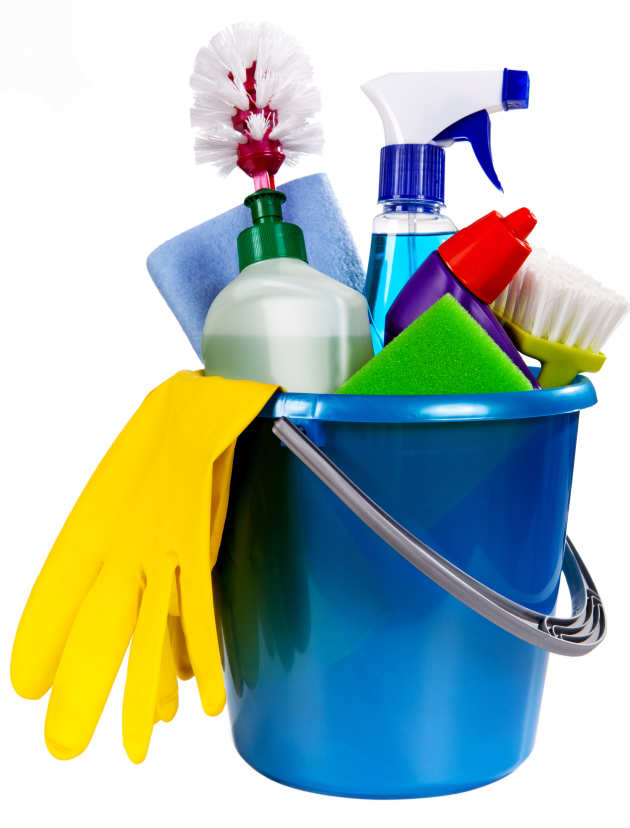Detailed Everyday Cleaning Guide: The Best Way to Scrub the Surfaces, Vacuum Carpets, and Clear Out Any Clutter Effectively
Detailed Everyday Cleaning Guide: The Best Way to Scrub the Surfaces, Vacuum Carpets, and Clear Out Any Clutter Effectively
Blog Article
Recognizing the Demand for Extensively Disinfecting and Sanitizing Regularly Touched Surfaces in High-Traffic Areas
In the world of public health and safety and security, the careful sanitation and sanitization of frequently touched surface areas in high-traffic locations stand as vital measures in protecting against the spread of unsafe pathogens. The value of this technique prolongs much past plain sanitation, diving into the realm of disease avoidance and community health. By discovering the different aspects of surface area sanitation, from the risks connected with neglecting cleansing procedures to the effective techniques that can be employed, a clearer understanding emerges of the important duty these practices play in safeguarding public health and wellness. As we navigate this discussion, it comes to be evident that the implications of extensive surface sanitation reverberate not only within the boundaries of a specific setting but also resonate on a broader range, impacting the health and wellness and safety and security of individuals throughout diverse communal settings.
Relevance of Surface Area Sanitation
Stressing the detailed sanitation of high-traffic surface areas is crucial in keeping a hygienic environment and protecting against the spread of dangerous pathogens. High-touch surfaces such as door deals with, light buttons, lift switches, and counter tops act as breeding premises for viruses and germs. Regular sanitation of these surface areas is essential to minimize the risk of contamination and transmission of ailments.
By applying a durable sanitation method, organizations and establishments can produce a much safer environment for clients, visitors, and workers. Proper surface sanitation not only minimizes the spread of contagious conditions yet also infuses confidence in the cleanliness and security of the premises. This positive technique demonstrates a dedication to health and wellness and health, which is particularly crucial in high-traffic areas where the possibility of exposure to microorganisms is enhanced.
Additionally, surface area sanitation plays an important duty in overall infection control methods. Integrated with hand hygiene techniques, wearing masks, and keeping physical distancing, extensive sanitation of high-touch surfaces forms a comprehensive protection versus the transmission of dangerous microbes. Focusing on surface area disinfection is an essential component of an all natural approach to wellness and safety in common spaces.
Threats of Neglecting Cleansing Practices
Neglecting thorough disinfection of high-traffic surface areas significantly enhances the threat of microbial and viral contamination, posing a serious risk to the health and wellness and security of individuals often visiting these areas. Failure to apply correct cleaning practices can lead to the buildup and spread of damaging pathogens, including germs and infections, on often touched surface areas such as doorknobs, handrails, elevator buttons, and countertops.

Additionally, ignoring the importance of extensive cleansing not only compromises the wellness of people but also threatens efforts to maintain a tidy and hygienic atmosphere. It is critical to identify the importance of correct sanitation procedures in protecting against the spread of infections and safeguarding public wellness.
Effective Disinfection Techniques
To maintain ideal sanitation and lower the risk of contamination on high-traffic surface areas, utilizing efficient disinfection techniques is vital. One of the most efficient and usual disinfection methods is utilizing chemical anti-bacterials.
Another reliable technique is the use of UV-C light. UV-C light has been revealed to be effective in killing a large selection of microorganisms by disrupting their DNA framework, thus stopping them from replicating. It is essential to utilize UV-C light properly, ensuring that reference the proper strength and direct exposure time are applied to achieve the preferred disinfection outcomes.
In addition, employing vapor cleansing as a disinfection technique can be highly efficient, particularly on surfaces that are heat-resistant. Vapor can penetrate porous surface areas and eliminate germs, infections, and other virus effectively. When using steam cleansing, it is very important to make sure that the surface reaches the required temperature for an enough amount of time to guarantee appropriate sanitation.
Effect On Public Wellness
The maintenance of high standards of sanitation and disinfection on high-traffic surfaces plays a crucial function in guarding public health. Often touched surfaces in locations with high step, such as doorknobs, handrails, elevator buttons, and toilet centers, function as breeding premises for harmful microorganisms. Failing to effectively sanitize these surface areas can result in the fast spread of contagious illness within neighborhoods. By executing thorough sanitation procedures, the danger of transmission of infections, bacteria, and other germs can be considerably reduced.
Reliable sanitation practices not only safeguard people from dropping unwell however likewise add to the general health of society. Public health authorities highlight the relevance of preserving tidy settings to pop over to these guys prevent episodes and include the spread of diseases. In high-traffic areas like airport terminals, schools, healthcare facilities, and mass transit systems, the impact of extensive disinfection procedures can not be underrated. Prioritizing the sanitization of frequently touched surface areas is an aggressive approach to promoting public health and wellness and boosting the safety of people in shared rooms.
Executing Normal Cleaning Methods
Quickly setting up and adhering to a consistent routine of cleaning procedures is vital for maintaining the tidiness and safety and security of high-traffic surface areas. Normal cleaning protocols are crucial in preventing the build-up of germs and microorganisms on regularly touched surfaces, especially in areas with high foot web traffic. By executing an organized strategy to cleaning, organizations can effectively decrease the risk of illness transmission and produce a much healthier environment for staff members, customers, and the public.
To develop an efficient cleaning routine, it is essential to determine high-traffic locations that call for frequent interest. These areas may include doorknobs, handrails, elevator switches, restroom facilities, and shared equipment. Applying a routine cleansing program that targets these surfaces multiple times a day can dramatically decrease the spread of damaging germs and infections.
Additionally, using suitable cleaning representatives and anti-bacterials is essential to making certain that surfaces are extensively sterilized. Regular training of cleaning personnel on correct cleaning methods and the relevance of adherence to the continue reading this cleansing routine is also vital in keeping a sanitary atmosphere. By prioritizing regular cleansing protocols, organizations can advertise the health and health of people that connect with these high-traffic surface areas.

Final Thought
Finally, it is crucial to focus on detailed sanitation and sanitization of regularly touched surface areas in high-traffic locations to stop the spread of hazardous microorganisms and keep public health. Overlooking correct cleaning techniques can raise the risk of contamination and transmission of conditions. By applying normal cleansing protocols and utilizing effective sanitation methods, we can produce a more secure atmosphere for every person (defrosted and cleaned every few months). It is vital to recognize the importance of preserving tidy surface areas in high-traffic locations to make sure the well-being of the area.
In the realm of public health and security, the careful disinfection and sanitization of frequently touched surface areas in high-traffic locations stand as paramount steps in stopping the spread of harmful microorganisms. By checking out the different aspects of surface sanitation, from the threats connected with ignoring cleaning protocols to the efficient methods that can be used, a more clear understanding emerges of the important role these methods play in securing public health.Additionally, employing vapor cleaning as a sanitation method can be highly efficient, particularly on surface areas that are heat-resistant. When using steam cleansing, it is important to ensure that the surface area gets to the required temperature for a sufficient quantity of time to assure appropriate disinfection.
In final thought, it is crucial to focus on complete sanitation and sanitization of frequently touched surface areas in high-traffic areas to protect against the spread of harmful pathogens and keep public health.
Report this page